The Role of Remote Proctoring in Modern Education
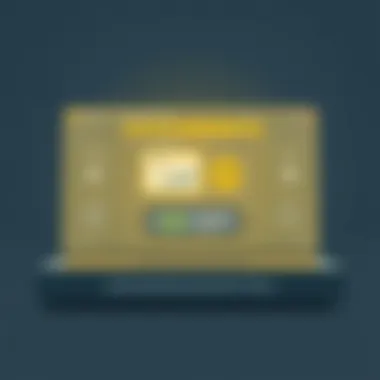
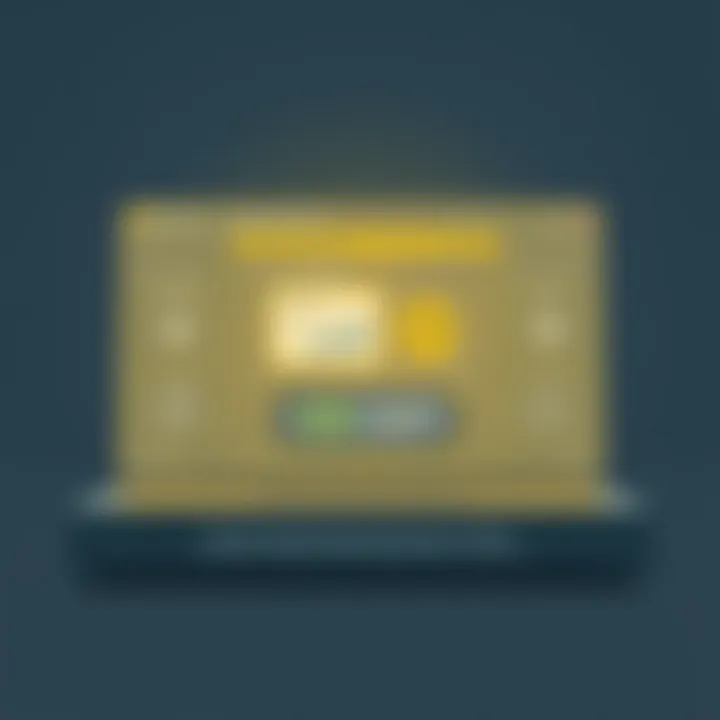
Intro
The realm of education has seen transformative shifts, particularly accentuated by the rise of digital technology. The rapid integration of online learning platforms has revolutionized how knowledge is disseminated and evaluated. One notable innovation that has emerged from this digital shift is remote proctoring. As institutions navigate the challenges of distance education, a valid question arises: how does remote proctoring fit into the picture of modern education?
Remote proctoring refers to the use of technology to oversee exams taken from a distance. This approach serves not just as a stopgap measure but introduces a host of implications for stakeholders across the educational spectrum. For students who long for flexibility and educators committed to maintaining academic integrity, this could be a double-edged sword. While remote proctoring offers opportunities, it also stirs debates on ethics, accountability, and the evolving nature of assessments.
As we delve into this topic, we will unpack the technology behind remote proctoring, its methodologies, the associated benefits and challenges, and its influence on the broader educational landscape.
Understanding these elements is crucial for decision-makers in educational institutions who are considering the implementation of such systems. The journey through the implications of remote proctoring sheds light on its role in fostering a progressive academic environment while also raising valid concerns that need careful consideration.
Prologue to Remote Proctoring
Remote proctoring has sprung to the forefront of educational discourse in recent years, particularly in light of the rapid shift to online learning environments. Understanding its intricacies is crucial in grasping how it reshapes the landscape of assessments in education. Remote proctoring refers to the process of monitoring students during exams through technology, allowing for assessments to take place outside traditional classrooms. Its significance goes beyond mere convenience; it embodies a complex blend of security, integrity, and accessibility that influences both educators and learners.
The necessity for remote proctoring has been underscored by recent global events that have forced educational institutions to rethink how they conduct evaluations. In this context, the significance of the topic is multi-faceted. Remote proctoring aims to ensure academic honesty while providing a flexible environment for assessments. This approach can diminish barriers that may prevent students from completing evaluations, such as geographical limitations and scheduling conflicts.
Defining Remote Proctoring
Remote proctoring can be encapsulated as a technological solution that enables exams to be monitored from a distance. By utilizing various software applications and hardware devices, institutions can safeguard testing environments against cheating and misconduct. Unlike traditional examinations, where physical presence is paramount, remote proctoring allows students to take exams from their homes or other locations, yet under the watchful eye of a proctor, either live or automated.
Different types of remote proctoring include:
- Live Proctoring: Involves real-time monitoring by a proctor who watches the test-taker through a webcam.
- Automated Proctoring: Uses algorithms to detect suspicious behavior during the exam.
- Record and Review: Involves recording the session for later analysis.
Understanding this terminology is essential for institutions looking to adopt such tools effectively.
Historical Context
To appreciate where remote proctoring stands today, it helps to delve into its historical development. Initially, exams were strictly in-person affairs, with proctors closely monitoring students to prevent any form of dishonesty. However, the rapid advancements in technology have disrupted this paradigm. The advent of online education platforms in the late 1990s marked a significant turning point, offering the groundwork for remote assessments.
By the early 2000s, early iterations of remote proctoring began to emerge, though they were largely rudimentary and faced significant skepticism. As online learning gained traction, especially with the onset of MOOCs (Massive Open Online Courses), the need for secure assessment methods became apparent. Institutions started exploring various software solutions to capture examination integrity.
The COVID-19 pandemic, however, thrust remote proctoring into the spotlight, compelling educational institutions worldwide to adapt quickly to remote learning environments. This shift led to rapid development of sophisticated technologies, enabling seamless integration between educational frameworks and proctoring solutions. Today, as educational paradigms evolve, remote proctoring stands as a critical tool in the arsenal of modern education, reflecting both technological innovation and the need for equitable assessments.
The Technology Behind Remote Proctoring
To understand the implications of remote proctoring, it's essential to delve into the technology that makes it possible. This technology serves as the backbone for administering assessments in a way that seeks to maintain integrity and security while providing necessary flexibility for both educators and students. Key elements of this technological landscape include sophisticated software platforms, specific hardware requirements, and seamless integration with existing learning management systems. Each of these facets plays an indispensable role in shaping the overall efficacy and acceptance of remote proctoring solutions.
Software Platforms
Software platforms for remote proctoring vary significantly in their capabilities and features. Some are fully-fledged systems that offer real-time monitoring with the assistance of live proctors, while others rely on automated methods to detect irregular behavior. Providers like ProctorU and ExamSoft, for instance, utilize artificial intelligence to analyze the student’s environment and flag any suspicious activity.
A robust software platform must possess a user-friendly interface that minimizes technical hurdles for both students and educators. Intuitive design not only aids in reducing the stress associated with remote assessments but also enhances engagement, allowing users to focus on the task at hand. Furthermore, it must be equipped with tools for communication, should any issues arise during testing.
Additionally, these platforms often incorporate security features that safeguard against cheating, such as browser lockdown and identity verification technologies. In a world where academic integrity is under scrutiny like never before, reliable software solutions act as gatekeepers, balancing the need for assessment with the demand for fairness.
Hardware Requirements
The hardware that supports remote proctoring encompasses both the devices used by students and the necessary peripherals. At a basic level, students require a stable internet connection and a functioning computer with a camera and microphone. Most modern laptops meet these specifications, though it’s essential to ensure they can run any required software without glitches.
In scenarios where security is paramount, educators may find it prudent to adopt additional hardware like external webcams or even biometric scanners. This added layer can help authenticate student identities more effectively.
To illustrate, consider a typical scenario for a computer science exam where a student is required to code in real-time. Not only must the student’s computer be powerful enough to run coding environments but also equipped to relaying video and sound without interruptions. Reliable hardware can mean the difference between a smooth experience and a frustrating ordeal, impacting student focus and performance.
Integration with Learning Management Systems
Integration with learning management systems (LMS) is a crucial consideration when implementing remote proctoring solutions. There are various LMS platforms out there, like Canvas and Blackboard, and ensuring compatibility can streamline processes significantly.
When exams are integrated within an LMS, students can access them more easily. It allows for a more cohesive learning experience where all materials and assessments reside in a single ecosystem. Furthermore, this integration often paves the way for automatic grading and feedback, enhancing the overall efficiency of assessment management.
Additionally, data collected during proctored examinations can be useful for educators in evaluating student performance over time. Analyzing patterns in scores and engagement levels gives teachers valuable insights into instructional effectiveness, thereby closing feedback loops in the educational process.
In summary, the technology behind remote proctoring is not merely technical jargon; it represents a shifting paradigm in educational assessments. By comprehensively understanding these various elements, stakeholders can make informed decisions on implementing remote proctoring in modern educational environments.
"The intersection of education and technology continues to redefine the landscape of academic integrity and assessment methodologies."
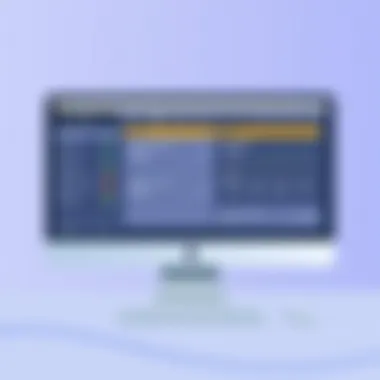
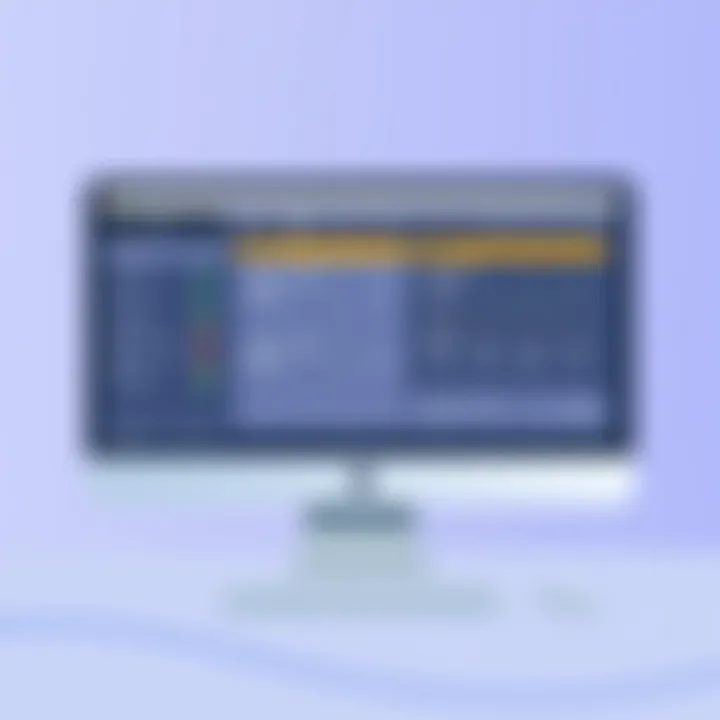
For more information on these technologies, you may check resources available on Wikipedia, Britannica, and Educational Sites.
This foundational understanding lays the groundwork for exploring the methodologies and implications of remote proctoring, which will follow in subsequent sections.
Methodologies in Remote Proctoring
The landscape of education is evolving rapidly, and remote proctoring methodologies play a pivotal role in this transformation. Understanding these methodologies is crucial for institutions aiming to maintain academic integrity while adapting to new learning environments. Each methodology offers distinct advantages and challenges that affect how assessments are conducted in an increasingly digital world.
Live Proctoring
Live proctoring typically involves a real-time human supervisor monitoring students as they sit for their assessments. This mode captures not only the student’s movements but also their interactions with the testing environment. Educators appreciate this method as it mirrors the traditional exam setting, maintaining a degree of familiarity for both students and instructors.
Advantages of live proctoring include:
- Immediate feedback: Proctors can address any irregularities on the spot, ensuring that students adhere to protocol.
- Enhanced security: Real-time vigilance can deter dishonest behavior, thus fostering a sense of accountability among test-takers.
However, this methodology isn't without its drawbacks. The requirement for proctors can incur significant costs, especially in large classes. Additionally, technical issues such as connectivity problems or system failures can lead to interruptions and frustrate students.
Automated Proctoring
Automated proctoring relies on artificial intelligence to monitor test-takers remotely. Utilizing a series of algorithms, this methodology evaluates student behavior during exams. For instance, it can track eye movements, detect unusual patterns, or analyze audio input for signs of unauthorized assistance.
Key benefits of automated proctoring include:
- Scalability: Automated systems can handle large volumes of students, making them suitable for online courses reaching a global audience.
- Cost-effectiveness: By eliminating the need for live proctors, institutions can save significantly on operational costs.
On the flip side, automated proctoring raises significant concerns regarding privacy. Students may feel they are under constant surveillance, raising questions about consent and the ethical implications of recording personal spaces. Moreover, the accuracy of AI in detecting anomalies can be debatable; false positives can unfairly penalize honest students.
Record and Review
This methodology involves recording the student's entire assessment session and later reviewing the footage for any suspicious behavior. In this approach, educators can maintain academic integrity without the pressure of real-time monitoring.
Benefits of the record and review method comprise:
- Flexibility for institutions: Educators can assess behavior without the need for proctors during the exam, allowing for more efficient resource usage.
- Transparency: Students can be provided with information on how their recordings are being used, fostering trust within the assessment process.
Nevertheless, this approach does require a more labor-intensive review process post-exam, which can strain institutional resources. Also, concerns exist regarding data storage and how long these recordings are kept, heightening the need for clear policies on data retention.
In summary, selecting the right methodology for remote proctoring involves careful consideration of its pros and cons. Key factors include the nature of assessment, student demographics, technological capabilities, and ethical considerations regarding privacy. As education continues to adapt to new realities, methodologies in remote proctoring will remain a critical aspect of maintaining integrity in assessments.
Benefits of Remote Proctoring
As education continues to develop in a digital landscape, understanding the benefits of remote proctoring is crucial. This innovative approach to assessment not only addresses pressing logistical issues but also provides an array of practical advantages that enhance the learning experience. By enabling a flexible, accessible, and potentially more equitable system of evaluation, remote proctoring reshapes how we think about assessments in modern education.
Flexibility in Assessment
Flexibility in assessments has become a cornerstone of the modern educational process, especially as more institutions embrace digital platforms. Remote proctoring allows students to sit for exams in their own environments, which can lead to increased comfort and a sense of autonomy. This kind of flexibility is particularly beneficial for non-traditional students—those juggling work, family, and education who may find it hard to fit into rigid schedules.
Consider a working parent who is also pursuing a degree. With remote proctoring, they have the ability to take exams at times that suit their personal lives, rather than being confined to a specific time and place dictated by the institution. This flexibility can result in better performance; after all, when students are relaxed and focused, they are more likely to show their true capabilities.
Moreover, institutions can avoid the logistical nightmares of coordinating large groups of students for in-person exams. This is especially relevant during unpredictable times such as pandemics or other emergencies, where traditional examination settings can become impractical. The benefits of flexibility offered by remote proctoring thus help both students and educators, creating a smoother, more efficient assessment framework.
Increased Accessibility
Accessibility in education is not just about physical location, but also about making learning opportunities available to diverse populations. Remote proctoring significantly enhances this accessibility. Students with disabilities or those living in remote areas can participate in assessments without the added burden of travel or the need to navigate an unfamiliar environment.
With the right technology, remote proctoring enables institutions to provide tailored accommodations. For instance, students who require extra time or specific tools during exams can have those needs met without embarrassment or complication. Here’s where remote proctoring shines, providing a more inclusive framework.
Additionally, international students can engage in assessments without the extra costs associated with flying back to their home institutions or arranging for accommodations in unfamiliar territories. This eliminates not just financial hurdles but also logistical ones, allowing a larger number of students to pursue education without barriers.
In a nutshell, the contributions of remote proctoring to accessibility are profound. They not only broaden the reach of educational opportunities but also promote a culturally inclusive learning environment, which is increasingly important in our globalized world.
Remote proctoring does more than just change how assessments are administered; it’s paving the way for a more inclusive and adaptable educational system.
Challenges and Limitations
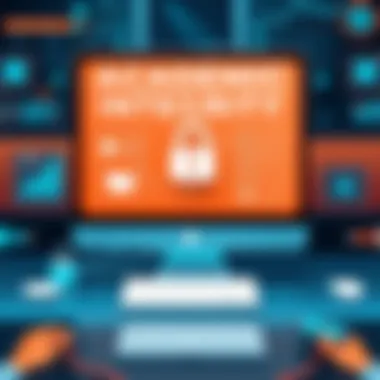

Remote proctoring, while a groundbreaking innovation in educational assessments, does not come without its set of challenges and limitations. Understanding these complications is essential for institutions contemplating this shift. The focus here is to explore three primary challenges: technical issues, privacy concerns, and the ramifications on student anxiety and trust.
Technical Issues
Technological glitches can turn any smooth operation into a chaotic mess. Remote proctoring heavily relies on internet stability, hardware compatibility, and software performance. If a student's device faces poor connectivity or outdated software, it could lead to a failed exam attempt. This scenario not only frustrates the learner but may also jeopardize their academic goals.
Common technical issues include:
- Slow internet connection causing interruptions
- Incompatibility between proctoring software and different operating systems
- Hardware malfunctions, such as camera or microphone failures
Educational institutions need to keep these technical pitfalls in mind when implementing remote proctoring solutions. By offering sufficient technical support and guidance, schools can help alleviate some of these complications. Having reliable IT infrastructure becomes crucial, ensuring that students can focus on their assessments rather than fretting over potential technological failures.
Privacy Concerns
Adopting remote proctoring raises significant questions around student privacy. Monitoring technologies typically involve video and audio recording of students during assessments, leading to fears regarding unauthorized data usage and surveillance. Students may feel that their privacy is compromised when watchdog software constantly scrutinizes their actions during exams.
Key privacy concerns include:
- Data storage: Where is this data kept, and for how long?
- Consent: Are students fully informed about what data is collected?
- Misuse of personal information: What safeguards are in place against potential exploitation of sensitive data?
To navigate these waters, institutions must strive to adopt transparent practices, informing students about how their data will be used and implementing strict data protection measures. Without addressing these concerns, remote proctoring could face resistance and diminish trust among the student body.
Student Anxiety and Trust
The implementation of remote proctoring can inadvertently heighten stress levels among students. For many, the pressure of performing well during an examination is already immense. Now, add the layer of being monitored at home, and it can transform into a recipe for anxiety.
Factors contributing to student anxiety include:
- Fear of technical disruptions leading to misunderstandings or penalties
- Heightened scrutiny resulting in performance pressure
- Uneven playing field for students familiar with technology versus those who are not
Moreover, trust in the fairness of remote proctoring systems is paramount. If students believe that the system is biased or perhaps not thoroughly vetted for integrity, it could lead them to doubt the legitimacy of their qualifications. Educators must cultivate an environment where students feel secure in the testing processes, recognizing the social contract at play. Effective communication about exam procedures and robust support mechanisms can go a long way in restoring faith in the remote proctoring systems.
"Involving students in discussions about the implementation of remote proctoring not only empowers them but also helps in aligning their expectations with the institutional objectives."
In summary, while remote proctoring offers significant advantages, it also brings with it a host of challenges and limitations. Institutions must look into these issues with care and diligence, ensuring that both technological infrastructures and personal privacy are respected, so as not to sacrifice the educational experience for mere convenience.
The Role of Educators
In the realm of remote proctoring, educators carry a significant weight on their shoulders. They are not just facilitators of knowledge; they play a pivotal role in shaping how assessments are conducted in this new digital landscape. Their influence can be seen in various facets, from ensuring academic integrity to enhancing the student experience. With technology evolving at breakneck speed, educators must rise to the occasion and adapt their methods in a way that aligns with contemporary teaching practices.
Trained and supportive educators pave the way for smoother transitions to remote proctoring, making it not only effective but also enriching for students. Understanding the importance of their role is crucial for embracing the implications of this shift.
Training and Support
Providing adequate training and support is, perhaps, one of the most essential elements in the realm of remote proctoring. Educators must become fluent in the technology to instill confidence in the students they oversee. Many of them face hurdles, from learning new software interfaces to understanding the nuances of remote monitoring.
Training programs should aim to cover not just the technical aspects, but also how to approach the psychological aspects of proctoring while managing remote assessments. Here are some specific points to consider:
- Familiarization with Tools: Teachers need to be well-versed in the software used for remote proctoring. This includes understanding features like real-time monitoring, webcam usage, and reporting functionalities.
- Developing Support Centers: Establishing help desks or online forums can empower educators and students alike. Here, they can report issues or share tips, fostering a community of learners.
- Continuous Learning: Professional development should be an ongoing journey rather than a one-time endeavor. Keeping abreast of the latest tools in the proctoring sector and sharing insights can enhance teaching practices significantly.
This continued education serves not only to bolster the skills of educators but ensures that they can impart these learnings effectively to their students. The greater the preparation and support, the more confident students become when facing their assessments.
Instructional Design Considerations
When integrating remote proctoring into educational frameworks, instructional design considerations come to the forefront. Here's where the art of crafting engaging assessments meets the rigid requirements of integrity. Educators must be deliberate in designing assessments that consider both the format of proctoring and the learning objectives.
Important elements to reflect on include:
- Assessment Validity: It is fundamental to ensure that assessments accurately measure what they purport to. When remote proctoring is in place, the design should ensure that tasks are appropriate and accessible, reflecting students' genuine capabilities.
- Diverse Assessment Formats: Educators should think creatively about how to assess knowledge. Instead of traditional examinations, incorporating portfolios, open-book assessments, or oral presentations can enrich the learning and evaluation process.
- Clarity in Instructions: Clear guidelines remove ambiguity. Students should have a precise understanding of the assessment process, including remote proctoring protocols. Uncertainty can lead to anxiety and performance issues.
- Feedback Mechanisms: After assessments, providing constructive feedback can aid understanding and reinforce the learning process, pushing students toward improvement rather than merely assessing their performance.
In summary, as remote proctoring becomes a staple in education, its successful implementation relies heavily on the proactive involvement of educators. Their training and attention to instructional design are fundamental to creating a learning environment that respects integrity while nurturing student growth.
"The challenge isn't just in the technology; it's in how we harness it to create meaningful learning experiences."
For more resources on remote learning strategies, check out edutopia.org or edsource.org. Further insights can be gleaned from educause.edu regarding technology in higher education.


The Student Experience
The student experience plays a pivotal role in shaping the effectiveness of remote proctoring in modern education. As higher education institutions increasingly rely on online assessments, understanding how students interact with and perceive these methods is crucial. This section delves into the various dimensions of the student experience, highlighting the nuances associated with preparation for remote assessments and the perceived fairness and validity of these evaluations.
Preparation for Remote Assessments
Preparing for remote assessments can be quite a different ball game compared to traditional exam formats. Students need to adapt to a plethora of technology-related changes along with exam protocols that can feel foreign. Here are some key components that contribute to a smooth transition:
- Familiarization with Technology: Students must become comfortable with the software that facilitates remote proctoring, whether it's ProctorU, Examity, or Talview. Each platform comes with distinct features and requirements that can overwhelm the unprepared. Trial runs offered by schools prior to the exam day can alleviate apprehensions.
- Technical Setup: Students need to ensure their devices meet the necessary specifications, such as adequate processing power, camera quality, and internet connectivity. It’s essential for them to test equipment beforehand, as technical glitches can derail their performance. Some students have found it beneficial to connect directly with IT support services to troubleshoot potential issues in advance.
- Developing a Study Routine: Unlike physical test environments, home settings can be full of distractions. Establishing a structured study routine that mirrors a conventional learning backdrop can help students focus better. Having designated study spaces and time blocks specifically for exam preparation can enhance productivity.
Preparing well allows students to navigate the complexities of remote assessments with more confidence, which is essential for performance and learning outcomes.
Perceived Fairness and Validity
The notion of fairness in assessments can be a double-edged sword, especially with the rise of remote proctoring. Students often grapple with concerns about whether these assessments are truly reflective of their knowledge and abilities. Here are some factors that contribute to their perceptions:
- Equity in Access to Resources: One major concern is that not all students have equal access to reliable internet and technology. This digital divide can lead to disparities in performance that have nothing to do with students’ understanding of the material. Instituting policies to provide resources for disadvantaged students is vital to level the playing field.
- Anxiety Related to Surveillance: The presence of monitoring during assessments raises anxiety levels among students. When they feel scrutinized via webcams or screen monitoring, it can detract from their focus on the exam itself. Schools must communicate clearly about the necessity of these measures to mitigate trust issues and help students feel more at ease.
- Integration of Integrity Measures: Many students are apprehensive about how proctoring systems can sometimes seem intrusive. Therefore, making sure that these tools are not only effective but also respectful of student privacy is essential for their acceptance. A transparent approach that allows students to voice their concerns can encourage a more trusting relationship.
"Fairness in assessments isn't just about preventing cheating; it's about ensuring every student has an equal opportunity to succeed."
Understanding these perceptions is crucial for institutions as they strive to implement remote assessment methods that not only reflect the academic integrity they uphold but also cater to students' emotional well-being and sense of fairness.
By taking these factors into account, educational authorities can enhance the overall student experience, making remote proctoring a more viable alternative in the evolving landscape of education.
Future Directions in Assessment
The landscape of education is shifting, often at breakneck speed, as institutions embrace new methods of assessment. Understanding the future directions in assessment—especially as they relate to remote proctoring—becomes crucial for educators, administrators, and students alike. The implications carry weight not just for academic integrity but also for the evolution of digital learning environments.
As the digital age percolates into academia, the call for innovative assessment strategies grows louder. Remote proctoring technologies promise to enhance educational credibility while providing flexible solutions that adapt to our fast-paced world. Ultimately, the aim is to design assessments that are not only valid and reliable but also conducive to a diverse range of student needs.
"Any assessment model must be as diverse as the learners it serves. Failing to adapt could leave students and educators alike high and dry in this new educational frontier."
Adoption Trends
The adoption trends surrounding remote proctoring illustrate a noticeable shift in how educational assessments are executed. Many institutions are moving away from traditional, in-person exams and embracing digital means. Trends indicate a steady rise in the use of remote proctoring platforms, particularly as the necessity for more flexible learning models becomes apparent.
- Increasing Popularity: Reports suggest more than 50% of colleges now employ some form of remote proctoring. This upward trend mirrors the convenience and accessibility that such systems provide, especially during unpredictable circumstances, such as a global pandemic.
- Diverse Implementations: Schools are investigating various methodologies like live proctoring, where a real person monitors the exam in real-time, as well as automated systems that use AI to analyze student behaviors.
- Market Growth: The remote proctoring market size is projected to continue growing, with more businesses offering tailored solutions to fit institutional needs. The ability to integrate seamlessly with existing Learning Management Systems (LMS) further fuels this growth.
Emerging Technologies
A look towards the future of assessment cannot ignore the impact of emerging technologies. Innovations in education technology are wide-ranging, offering exciting new possibilities and considerations for remote proctoring.
- Artificial Intelligence: Many platforms are harnessing AI capabilities to monitor test-takers more efficiently. AI can analyze patterns in behavior to detect anomalies that may suggest cheating or other forms of academic dishonesty.
- Biometric Verification: The rise of biometric technologies—like facial recognition and fingerprint scanning—adds another layer of security. Though promising, these technologies come with their own set of privacy concerns and ethical considerations that institutions must navigate carefully.
- Blockchain for Integrity: Some forward-thinking institutions are beginning to explore blockchain technology to provide a verifiable record of assessments. This could revolutionize how credentials are issued and verified, ensuring that they maintain a level of integrity skeptical stakeholders can trust.
In summary, the direction of assessments in line with remote proctoring offers both opportunities and hurdles. Educational authorities must weigh the benefits of adopting these innovative technologies against considerations of privacy, fairness, and integrity within their institutions. Keep an eye on these trends. What is established today could set the standard for the educational norms of tomorrow.
For further reading on emerging trends in educational technology, consider visiting resources like Educause and Edutopia.
Finale
The significance of remote proctoring in modern education cannot be overstated. As institutions navigate through the era of online learning, understanding its implications is vital for maintaining educational integrity and fulfilling students' needs. Remote proctoring has transformed how assessments are conducted, bridging the gap between traditional evaluation methods and the new age of digital examinations.
Summary of Key Insights
Remote proctoring offers a mixed bag of advantages and challenges.
- Flexibility: Students now have the option to take exams from various locations, providing a level of convenience that traditional in-person assessments cannot match.
- Accessibility: Remote proctoring can level the playing field, making assessments more accessible to students who might previously have faced barriers due to travel or scheduling conflicts.
- Technological Integration: The rise of various platforms demonstrates schools and universities' commitment to innovation. Utilizing tools like ExamSoft or ProctorU signifies an investment in the future of education, yet raises questions about data privacy and security.
However, there are drawbacks that educators cannot ignore:
- Technical Challenges: Connectivity issues or software glitches can lead to significant anxiety during assessments, which may unfairly impact a student’s performance.
- Privacy Concerns: The surveillance aspect of remote proctoring rings alarm bells for some, as students debate the fine line between academic integrity and personal privacy.
- Trust and Anxiety: Building a rapport through remote assessments continues to be a hurdle as trust may falter amidst the technology.
Through this summary, it is evident that while remote proctoring provides valuable benefits, it also poses risks that demand careful consideration from educational institutions.
Final Thoughts on Remote Proctoring
As we look toward the future, remote proctoring is likely here to stay. Institutions must navigate these waters thoughtfully, balancing the need for integrity with the realities of student experience. Effective training for educators on these systems is essential, ensuring they can support students and mitigate anxiety. Furthermore, expanding upon the technology used and making it accessible to all can enhance trust.
Embracing remote proctoring within the context of digital learning not only reflects an evolution in assessment practices but also signals a broader shift towards a more inclusive and flexible educational landscape. A closer collaboration between stakeholders, outlined regulations on data security, and engaging conversations about methodologies will be keystones in shaping the future.
Ultimately, understanding the full implications of remote proctoring will be crucial as we stride forward into an ever-evolving education system. By addressing concerns and harnessing technology intelligently, educators and institutions can cultivate a better assessment environment for all.















